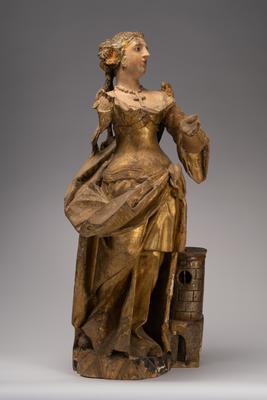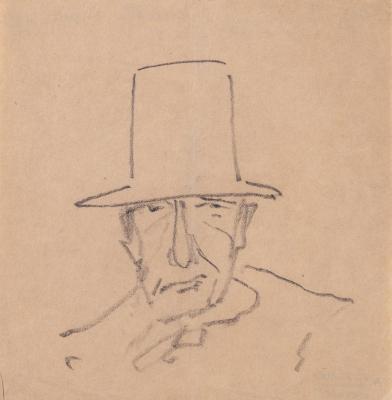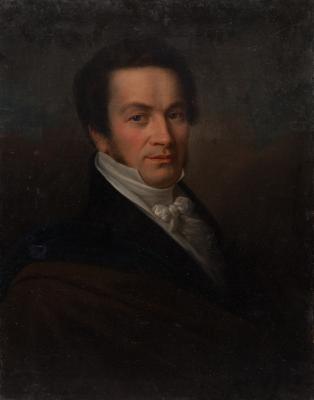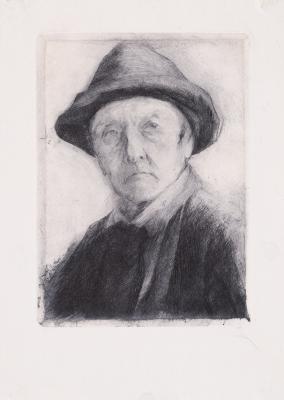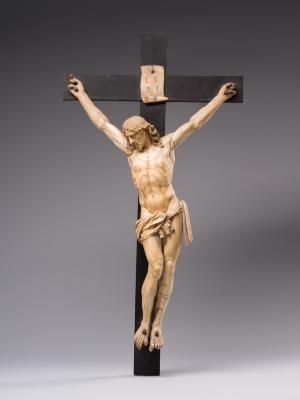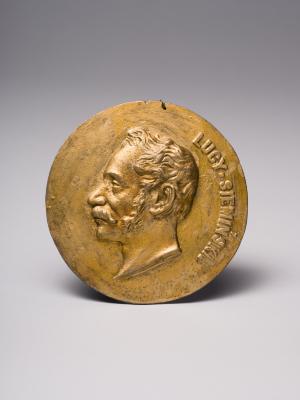Marie Casimire Louise de La Grange d'Arquien (1641–1716) was a wife of Jan III Sobieski, the King of the Polish-Lithuanian Commonwealth. She was a daughter of Henri-Albert de La Grange Montigny d'Arquien, French general and cardinal, and Francoise de La Chart. In the history of Poland, she is known as Marysienka. The stylistic changes of the Ukrainian portraiture were in line with the trends in European painting. The image is devoid of static, there is much of emotional coloring and a reproduction of the inner world of the person portrayed in the work. The portrait shows a young woman turned three-quarters to the right, in a low-necked dress, a mantle lined with fur, and with a pendant on her neck. The artist painted the portrait features of Marysienka in detail, in particular a graceful oval face framed by curls of black hair, a high forehead, a straight nose, small pouty lips, and a well-defined chin. The image of Marie Casimire is painted using large planes of bright colors, in the manner typical of a provincial artist.










